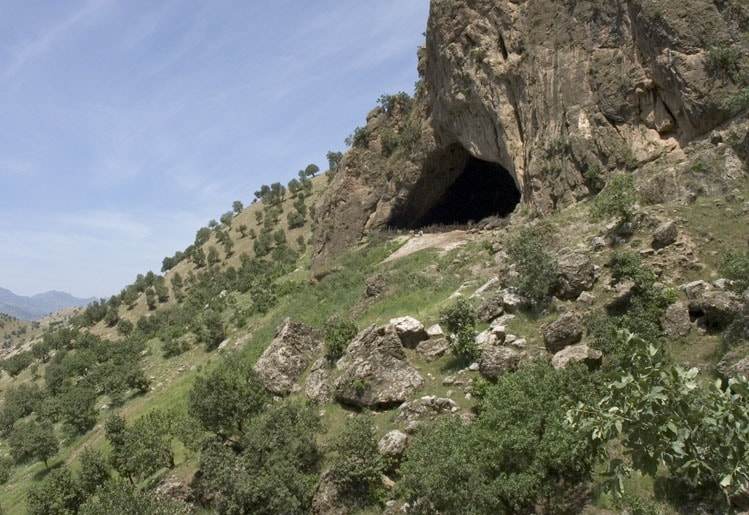Pollen, Really?
Palynology is defined as “The study and analysis of fossil pollen as an aid to the reconstruction of past vegetation and climates” (Renfrew & Bahn, 2018). Pollen is useful in the archaeological sense as it can give us an idea of the many different climatic changes that the same area may go through over a large period of time.
What’s the Shanidar Cave?
Located in Kurdish Iraq, the Shanidar Cave was home to one very peculiar Neanderthal. This Neanderthal was excavated from the site and then examined. Oddly enough, his skull was found to be severely damaged, and his arms and legs were found to show some resemblance of deformities (The Kurdish Project, n.d.). His skeletal remains intrigued archaeologists and so that site came to be something of interest.

Palynology in Shanidar Cave
Pollen can provide insight into the biological composition of an area or the area that surrounds it. In the case of the Shanidar Cave, palynologists were determined to see what we can learn this, and what they found is something noteworthy, perhaps not as intriguing as skeletal remains, but we’re talking about pollen here.
Pollen research by the School of Natural Science and Psychology, Liverpool John Moores University has found that wind and animals have played a substantial part on transportation of pollen from the outside of the cave within: “The cave structure, with a single wide entrance, is likely to facilitate good air circulation, bringing anemophilous pollen into the cave” (Fiacconi & Hunt, 2015). The teams used samples from inside and outside of the cave. These samples ranged from being in animal droppings, from vegetation, to being found within the mountains. These samples went through different tests, such as “Chlorination, acetolysis and density separation” (Fiacconi & Hunt, 2015). The most effective method was density separation. This method helped the researchers to find which locations each source of pollen derived from, and how the pollen may have traveled from one location to another.

Other pollen related findings in the Shanidar Cave can be seen in the study published by Cambridge University Press. There is a common theory that the Neanderthals of the region had flower burials and their research has shown that that might not be the exact story. However, there were “clumps of pollen grains from adjacent sediments [which] were interpreted as evidence for the intentional placement of flowers with the corpse” (Pomeroy et al., 2020). They found that the Neanderthals had come back to the locations several times “to deposit their dead” (Pomeroy et al., 2020). Clearly, this cave has had some connections to funerary events.
This is merely just a glimpse of what the world of Palynology and the Shanidar Cave have to offer. Provided below will be several links to see a more in depth look at the research discussed and other examples that were not mentioned in this post.
References:
Fiacconi, Marta, Chris O. Hunt, I.D. Campbell, J.S. Carrión, G.M. Coles, K.J. Edwards, C.O. Hunt, et al. “Pollen Taphonomy at Shanidar Cave (Kurdish Iraq): An Initial Evaluation.” Review of Palaeobotany and Palynology, September 26, 2015. https://www.sciencedirect.com/science/article/pii/S0034666715001724#s0025.
Pomeroy, Emma, Paul Bennett, Chris O. Hunt, Tim Reynolds, Lucy Farr, Marine Frouin, James Holman, Ross Lane, Charles French, and Graeme Barker. “New Neanderthal Remains Associated with the ‘Flower Burial’ at Shanidar Cave: Antiquity.” Cambridge Core, February 18, 2020. https://www.cambridge.org/core/journals/antiquity/article/new-neanderthal-remains-associated-with-the-flower-burial-at-shanidar-cave/E7E94F650FF5488680829048FA72E32A.
Renfrew, Colin, and Paul Bahn. 2018. Archaeology Essentials: Theories, Methods, and Practice. Fourth edition. Thames & Hudson.
“Shanidar Cave.” The Kurdish Project, June 22, 2015. https://thekurdishproject.org/history-and-culture/kurdish-history/historical-sites-in-kurdistan/shanidar-cave/.
Image Links:
https://ars.els-cdn.com/content/image/1-s2.0-S0034666715001724-gr1.jpg
https://thekurdishproject.org/wp-content/uploads/2015/05/Erbil_governorate_shanidar_cave.jpg
Additional Resources:
https://nph.onlinelibrary.wiley.com/doi/epdf/10.1111/j.1469-8137.1993.tb03844.x?src=getftr
https://www.sciencedirect.com/science/article/pii/S004724840900092X?via%3Dihub

What is the archaeological significance of discovering the Neanderthals’ use of flowers for ceremonial purposes? Why may burials and funerary ceremonies be critical to understanding prehistoric humans? Were there flower-adorned burial sites that predated this one?